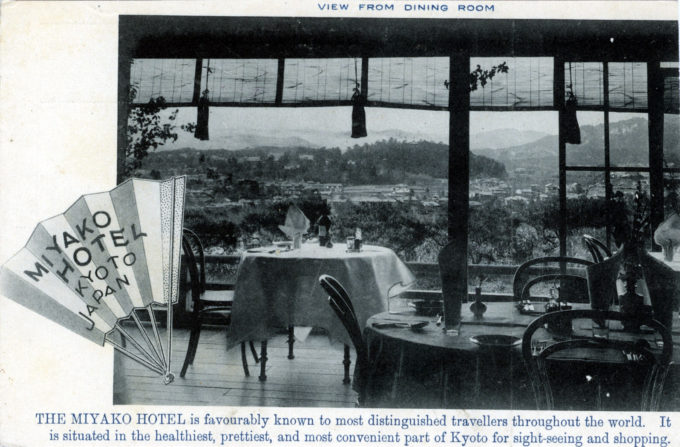
Dining room, Miyako Hotel, Kyoto, c. 1930. “The Miyako Hotel is favourably known to most distinguished travellers throughout the world. It is situated in the healthiest, prettiest, and most convenient part of Kyoto for sight-seeing and shopping.”
See also:
Veranda View of Kyoto, Miyako Hotel, c. 1910-1920
“The Miyako Hotel is a celebrated and popular hostelry, in an attractive garden on the slope of Higashi-yama in the NE quarter of the city, high above the city and out of reach of the disastrous fires which sometimes sweep the business section.
“[The hotel] has the advantage of pure air, wide views, proximity to the chief temples, a charming situation, and many home comforts: steam heat, open fireplaces, glassed in reading and dining rooms, foreign newspapers and magazines, etc. Good food. Rates from ¥6 to ¥10 a day. American plan, according to location of room. Baths and coal free.
“Guests sightseeing in the S quarter of the city can tiffin at the station restaurant or at the Daibutsu Hotel without extra charge. The Miyako Tours Bureau, operated in connection with the hotel, cashes letters of credit; stores and forwards luggage and curios; conducts a local express service; secures accommodations on railways and in theaters, and buys tickets therefor; charters yachts, hires servants, and provides guides and interpreters at moderate rates.
“… An English-speaking coolie will serve for the trip over Hiei-zan but the traveler should try to secure the services of Mr. R. Fujino of the Miyako Hotel who knows Koya-san well and, besides being an intelligent and helpful companion, is also a sturdy and tireless walker.”
– Terry’s Japanese Empire, T. Phillip Terry, 1914
“As one enters the long glassed-in [Miyako Hotel] dining room which overlooks the city of Kyoto, the artistic arrangement of the flowers – the fragrant iris, carnation, chrysanthemum, or other grouping of flowers such as is known only to the Japanese artist – catches the eye. The rolling of the napkins, standing upright in each glass upon the table, seems too to harmonize wonderfully with the art expressed in the arrangement of the flowers.
“With such restful surroundings, it is not to be wondered at that the tourist is able to study the processes of manufacture of silks, cloisonne, damosene, and other ware with an interest not aroused at any other Japanese city.”
– “Short Journeys in Pacific Lands”, The Journal of Electricity, Vol. 40, February 15, 1918
” The Miyako stands on a picturesque hillside some dis- tance east of the river, on the Sanjo, one of the principal thoroughfares of the city.
“The hotel consists of a series of separate one- and two-story buildings, placed one above the other on the hillside, connected by corridors and sur- rounded by an attractive park which formerly belonged to the Atwata Palace.”
– An Army Officer On Leave in Japan, by L. Mervin Maus, Colonel, United States Army, 1911

“Mt. Kurotani seen from the Miyako Hotel”, c. 1940. A view of Komyo-ji Temple. established in 1198 as the head temple of the Seizan sect of Pure Land Buddhism.
“Most Japanese girls giggle. The little maid on the fourth floor of the Miyako Hotel, in Kyoto, was no exception. Hilarity, and attempts to suppress it, pinked her cheeks, shook her plump peony-and-pansy-kimonoed figure. There seem to be no particular reason for this merriment; the Japanese giggle operates without apparent motivation. I’d merely asked to be directed to a certain room. ‘You come see Marron?’ she gasped. Then, with the tiny, pigeon-toed skating steps that the wearing of a kimono necessitates, she led me through a labyrinth of corridors, promising ‘I knock you Marron.’ The ‘l’ sound does not exist in Japanese, and by ‘Marron’ the maid meant Marlon – Marlon Brando, the American actor, who was at that time in Kyoto doing location work for the Warner Brothers-William Goetz motion-picture version of James Michener’s novel Sayonara.
“My guide tapped at Brando’s door, shrieked ‘Marron!’ and fled away along the corridor, her kimono sleeves fluttering like the wings of a parakeet. The door was opened by another doll-delicate Miyako maid, who at once succumbed to her own fit of quaint hysteria. From an inner room, Brando called ‘What is it, honey?’ But, the girl, her eyes squeezed shut with mirth and her fat little hands jammed into her mouth, like a bawling baby’s, was incapable of reply. ‘Hey, honey, what is it?’ Brando again inquired, and appeared in the doorway. ‘Oh, hi,’ he said when he saw me. ‘It’s seven, huh?’ We’d made a seven-o’clock date for dinner; I was nearly twenty minutes late. ‘Well, take off your shoes and come on in. I’m just finishing up here. And, hey, honey,’ he told the maid, ‘bring us some ice.'”
– Portraits and Observations: The Essays of Truman Capote, Truman Capote, 2008
- Miyako Hotel, dining room, Kyoto, c. 1930.
- Miyako Hotel, suite interior, Kyoto, c. 1930.
- Lounge and drawing room, Miyako Hotel, c. 1920.
- Entrance hall and elevators, Miyako Hotel, c. 1920.
“The famous Miyako Hotel, occupying a 55,000-square-meter plot of choice forested land in one of Kyoto’s most popular tourist areas, opened with 18 guest rooms in 1898. The hotel has long been the preferred stopping place of the rich and famous, particularly foreigners, since it opened. Today, the hotel, though largely renovated, continues to exude the style and quality of service it has always been known for, and is still widely regarded to be the finest hotel in the city.”
– Historical Dictionary of Osaka and Kyoto, Ian Martin Röpke, 1999


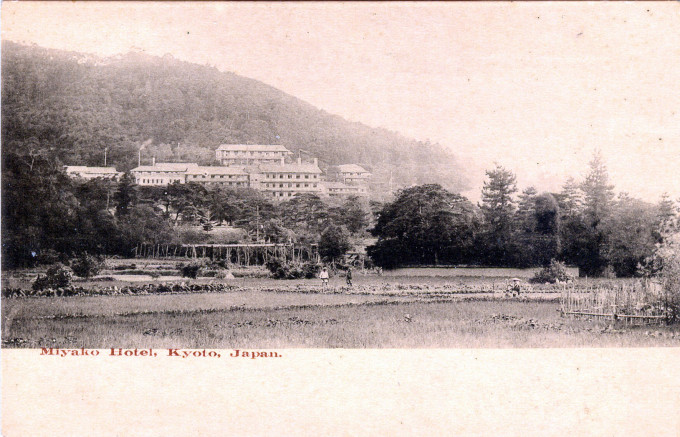
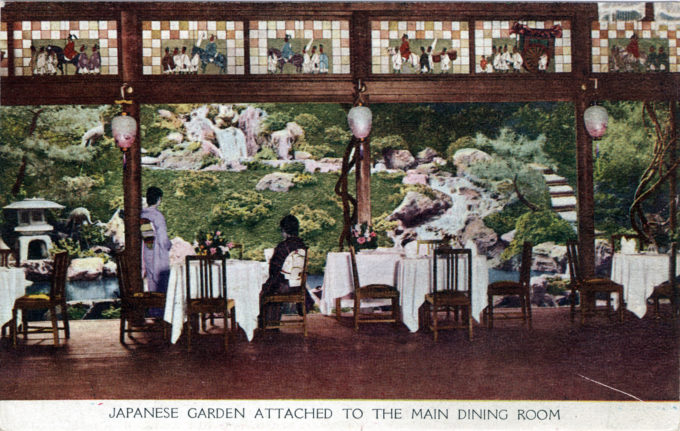
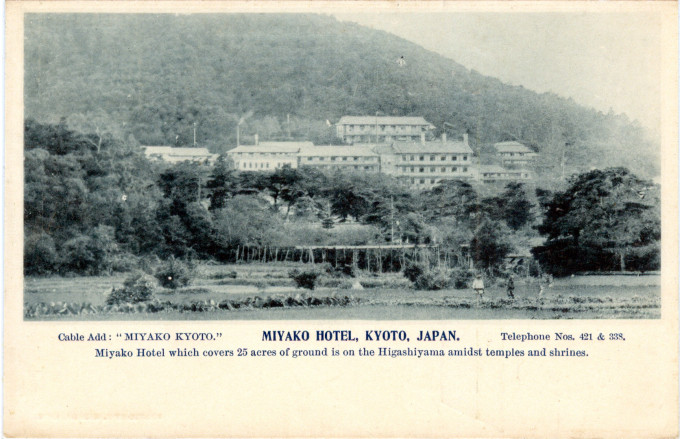
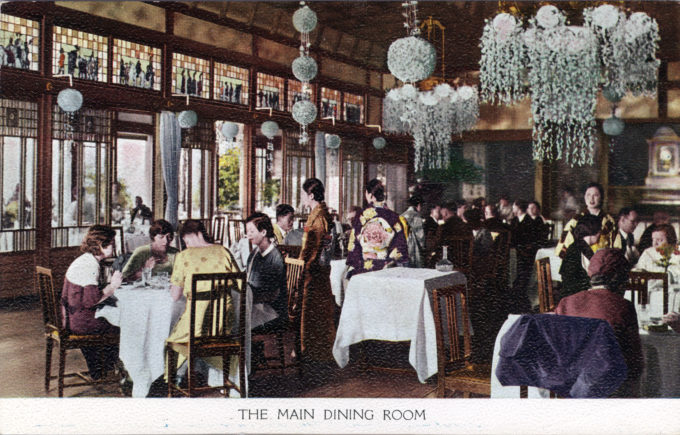
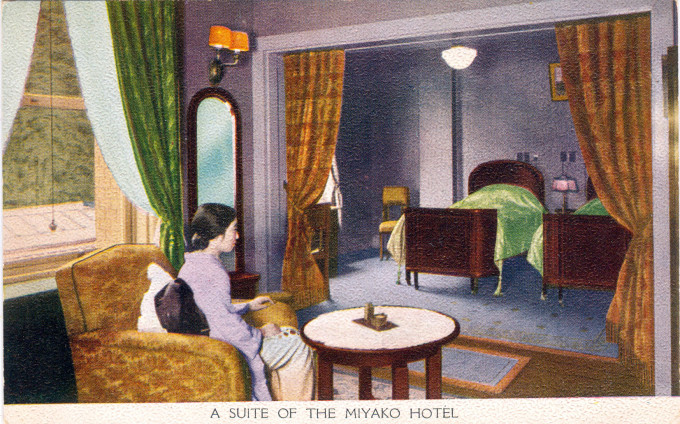
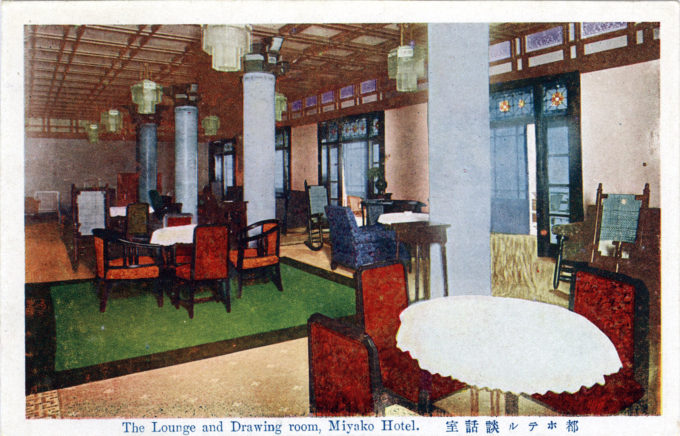
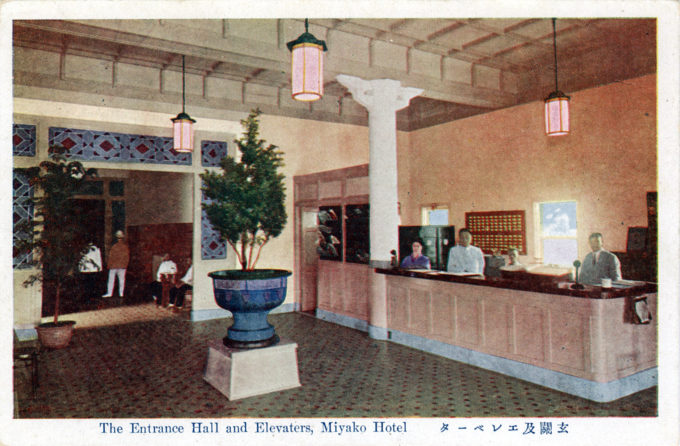
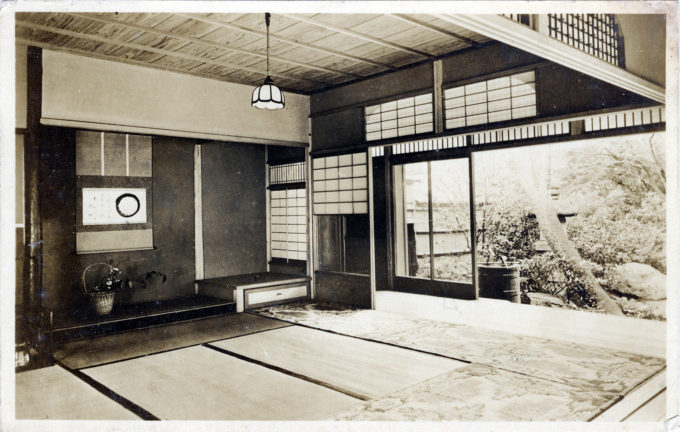
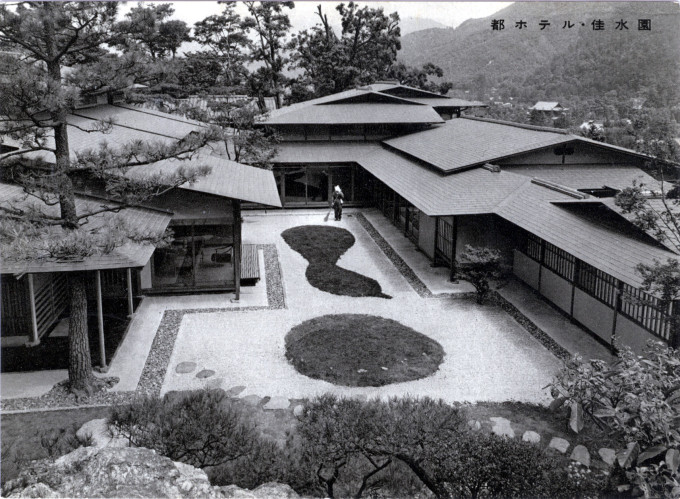
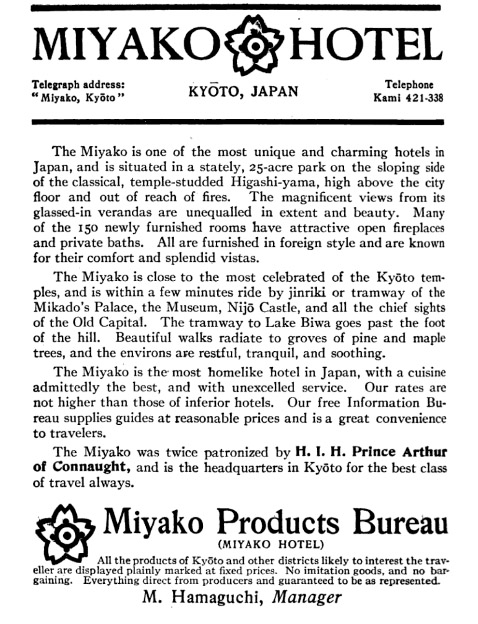
Pingback: Veranda View of Kyoto, Miyako Hotel, c. 1910-1920. | Old Tokyo
Pingback: 第5届国际流变学大会 – Πάντα ῥεῖ
Pingback: Henry Stimson didn't go to Kyoto on his honeymoon | Restricted Data
Pingback: The Oppenheimer 2023 Film: Henry Stimson Didn’t Go to Kyoto on His Honeymoon – Counter Information